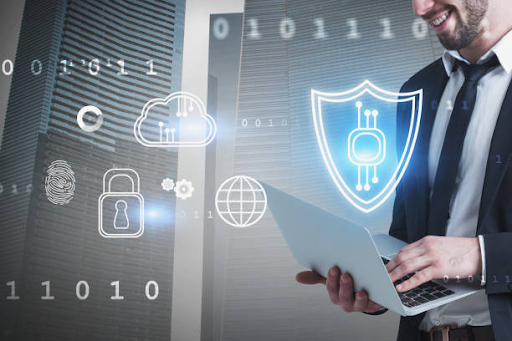Safeguarding Digital Identity: The Importance of Ping Access Management

In today’s digital age, where online interactions and transactions have become ubiquitous, safeguarding digital identity is paramount. As individuals and organizations conduct more business and share more personal information online, the risk of identity theft, data breaches, and unauthorized access grows.
Ping Access Management plays a crucial role in securing digital identities, protecting sensitive information, and ensuring seamless access to resources. To acquire more information about ping access management, you can contact ProofID.
Understanding Ping Access Management
Understanding Ping Access Management involves grasping how it regulates access to resources, ensuring secure authentication and authorization, enhancing user experience, and safeguarding sensitive data across digital platforms.
Definition and Purpose
- Definition: Ping Access Management refers to the process of managing and controlling access to digital resources, applications, and data through a centralized identity and access management (IAM) platform.
- Purpose: The primary purpose of Ping Access Management is to authenticate users, authorize access based on predefined policies and permissions, and enforce security controls to protect digital identities and prevent unauthorized access.
The Importance of Ping Access Management
The importance of Ping Access Management lies in its ability to fortify cybersecurity defenses, streamline access controls, prevent unauthorized entry, uphold regulatory compliance, and safeguard sensitive information across networks.
Protecting Digital Identities
Protecting digital identities involves implementing robust security measures, such as multi-factor authentication and encryption, to prevent unauthorized access, identity theft, and data breaches, ensuring user privacy and trust.
- Identity Verification: Ping Access Management verifies the identity of users through various authentication methods, including passwords, multi-factor authentication (MFA), and biometrics, ensuring that only authorized individuals can access digital resources.
- Access Controls: By enforcing access controls and authorization policies, Ping Access Management restricts access to sensitive information and critical systems based on users’ roles, privileges, and permissions, minimizing the risk of data breaches and insider threats.
Enhancing User Experience
Enhancing user experience involves optimizing interface design, streamlining processes, personalizing interactions, and minimizing friction, leading to increased satisfaction, retention, and loyalty among customers or users.
- Single Sign-On (SSO): Ping Access Management enables single sign-on capabilities, allowing users to access multiple applications and resources with a single set of credentials, enhancing user convenience and productivity.
- User Self-Service: Ping Access Management offers self-service features, such as password reset and account unlock, empowering users to manage their own identities and access rights without relying on IT support, thereby improving user satisfaction and reducing administrative overhead.
Components of Ping Access Management
Components of Ping Access Management include authentication servers, access policies, identity providers, single sign-on capabilities, authorization mechanisms, user directories, and security protocols, ensuring robust access control and protection.
Identity Verification
Identity verification involves confirming the authenticity of a user’s identity through various methods such as biometrics, document verification, knowledge-based authentication, or behavioral analysis, ensuring secure access to digital services.
- Authentication Methods: Ping Access Management supports various authentication methods, including passwords, smart cards, biometrics, and OTPs, to verify users’ identities and prevent unauthorized access.
- Multi-Factor Authentication (MFA): MFA adds an extra layer of security by requiring users to provide multiple forms of authentication, such as passwords and biometrics, to access sensitive resources and applications.
Access Control Policies
Access control policies dictate who can access what resources within a system. They enforce security measures by defining permissions, restrictions, and authentication requirements, safeguarding sensitive data and preventing unauthorized access.
- Role-Based Access Control (RBAC): Ping Access Management implements RBAC policies, allowing organizations to assign roles, privileges, and permissions to users based on their job functions and responsibilities, ensuring appropriate access to resources.
- Attribute-Based Access Control (ABAC): ABAC policies evaluate users’ attributes, such as job title, department, and location, to make access control decisions, providing granular access controls based on dynamic factors.
Best Practices for Implementing Ping Access Management
Best practices for implementing Ping Access Management include thorough planning, user training, regular audits, integrating with existing systems, enforcing strong authentication, and staying updated with security measures, ensuring robust protection.
Define Access Policies and Controls
Access policies and controls are rules and mechanisms that regulate who can access specific resources, specifying permissions, authentication methods, and conditions for accessing digital assets securely.
- Access Policy Design: Define access policies, permissions, and controls based on business requirements, security policies, and regulatory mandates, ensuring that access rights align with users’ roles and responsibilities.
- Least Privilege Principle: Follow the principle of least privilege, granting users only the access rights and permissions necessary to perform their job functions, minimizing the risk of privilege misuse and data breaches.
Implement Multi-Layered Security
Implementing multi-layered security involves deploying multiple security measures such as firewalls, encryption, intrusion detection systems, and access controls to protect against various cyber threats effectively.
- Multi-Factor Authentication: Implement MFA for accessing sensitive resources and applications, requiring users to provide multiple forms of authentication to verify their identities and prevent unauthorized access.
- Encryption and Data Protection: Utilize encryption techniques and data protection mechanisms to secure sensitive information in transit and at rest, protecting digital identities and preventing unauthorized disclosure or tampering.
Conclusion
In conclusion, Ping Access Management plays a vital role in safeguarding digital identities, protecting sensitive information, and ensuring secure access to digital resources and applications. By verifying users’ identities, enforcing access controls, and facilitating single sign-on capabilities, Ping Access Management helps organizations enhance security, improve user experience, and achieve compliance with regulatory requirements.



